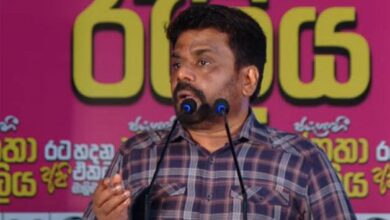Sri Lanka strengthens ties with India amid economic challenges and regional complexities
When the unprecedented economic turmoil struck Sri Lanka last year, India swiftly extended a lifeline to the country with assistance of over $4 billion, surpassing the International Monetary Fund's 48-month bailout of about $3 billion.

The timely financial support from India was a testament to the strong bond between the two countries. Sri Lanka, acknowledging India’s role, successfully navigated the IMF negotiations in March this year, crediting India’s Finance Minister Nirmala Sitharaman for her role during the early stages of discussions with the global lender.
A significant development was Sri Lanka’s decision to utilise the first tranche of $330 million of the IMF bailout to repay Indian loans. This underscored India’s patience and generosity in assisting its neighbour in overcoming economic challenges.
President Ranil Wickremesinghe’s official visit to New Delhi in mid-July, albeit delayed, marked a crucial diplomatic engagement between the two nations.
During his meeting with Prime Minister Narendra Modi, President Wickremesinghe tried to address India’s concerns over Tamil issues, emphasising the importance of resolving the matter. India reiterated its long-standing insistence on the full implementation of the 13th Amendment as a solution to the demand of the Tamil minority community for political autonomy in the north and east regions of the island nation.
Ahead of his India trip, Wickremesinghe’s engagement with Tamil parties showcased a proactive approach toward addressing the long-pending demand of the Tamils for political autonomy. As if to assure India, the president outlined plans for devolution, pledging that 13A with full powers, except police powers, would be implemented.
As part of his continued efforts to address the thorny issue of ethnic reconciliation of minority Tamils, Wickremesinghe in December held parleys with the Tamil political parties represented in the north
and east.
According to the president’s office, the discussions focused on various issues, including the provision of land rights for the people in the Northern and Eastern provinces, the implementation of laws related to resettlement and reconciliation, and the challenges faced by Sri Lankans in refugee camps in India.
“Issues concerning district development in the Northern and Eastern provinces were addressed,” it said.
However, analysts here opine that the lack of tangible progress on the implementation of 13A could raise concerns in New Delhi, constituting unfinished business in the bilateral relationship.
The year 2023 also saw the navies of Sri Lanka and India reinforcing their strong ties. Many Indian naval ships, including the INS Batti Malv, INS Nireekshak, and INS Delhi, docked at Sri Lankan ports.
However, at the same time, India remained concerned over the frequency of Chinese research ships berthing at Sri Lankan ports. Colombo has also consistently expressed solidarity with New Delhi’s security concerns in the Indian Ocean, responding to apprehensions raised regarding the frequent port calls by Chinese research ships on alleged spy missions.
Despite limitations in completely curtailing Chinese vessel entry, Sri Lanka appreciated India’s measured approach to regional power dynamics.
In December, Sri Lanka imposed a one-year moratorium on allowing foreign vessels to conduct research in its territorial waters, amidst frequent docking requests from Chinese surveillance ships, and communicated it to the relevant countries.
State Minister of Foreign Affairs Tharaka Balasuriya emphasised the importance of a close relationship with India for Sri Lanka’s future growth.
The year saw Sri Lanka’s keen interest in furthering investment in port and airport expansion with India, highlighting the mutually beneficial aspects of economic cooperation.
The expansion of the Colombo port’s west container terminal by India’s Adani Group conglomerate, underwritten by a $550 million commercial loan from the US International Development Finance Corporation, was also a significant business development.
India’s Alliance Air commenced daily scheduled operations between Jaffna and Chennai in July.
The collaboration extended beyond economic ties, with a direct ferry service, connecting Nagappatinam in India and Kankesanthurai near Jaffna, resuming between the two countries in October, and improvements to the Palali airport in the northern province. Finance Minister Sitharaman’s departing flight took off from Palali airport after her November visit during which she opened two branches of State Bank of India one in Jaffna and the other in Trincomalee.
Notably, India’s financial and developmental outreach in Lanka included grants for the promotion of Buddhist ties ($15 million), solar electrification of places of worship ($10 million), and construction of 10,000 houses in plantation areas.
Soft power initiatives, such as Sitharaman’s interactions with influential Buddhist clergy and her visit to the iconic Nallur Kovil in Jaffna, played a significant role in enhancing the relationship between the two neighbours.
Sitharaman was also the Guest of Honour at the ‘Naam 200’ event to mark 200 years of the arrival of the Indian-origin Tamil community to Sri Lanka.
Interestingly, cricket emerged as the least expected focal point in the bilateral relationship’s agenda.
The sport, unexpectedly, garnered international attention, ranging from hosting a rare India-Pakistan encounter in Sri Lanka to allegations of Indian involvement in the Sri Lanka Cricket administration.




